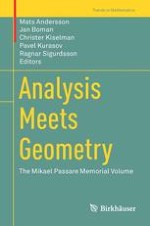This book is dedicated to the memory of Mikael Passare, an outstanding Swedish mathematician who devoted his life to developing the theory of analytic functions in several complex variables and exploring geometric ideas first-hand. It includes several papers describing Mikael’s life as well as his contributions to mathematics, written by friends of Mikael’s who share his attitude and passion for science. A major section of the book presents original research articles that further develop Mikael’s ideas and which were written by his former students and co-authors. All these mathematicians work at the interface of analysis and geometry, and Mikael’s impact on their research cannot be underestimated. Most of the contributors were invited speakers at the conference organized at Stockholm University in his honor. This book is an attempt to express our gratitude towards this great mathematician, who left us full of energy and new creative mathematical ideas.
